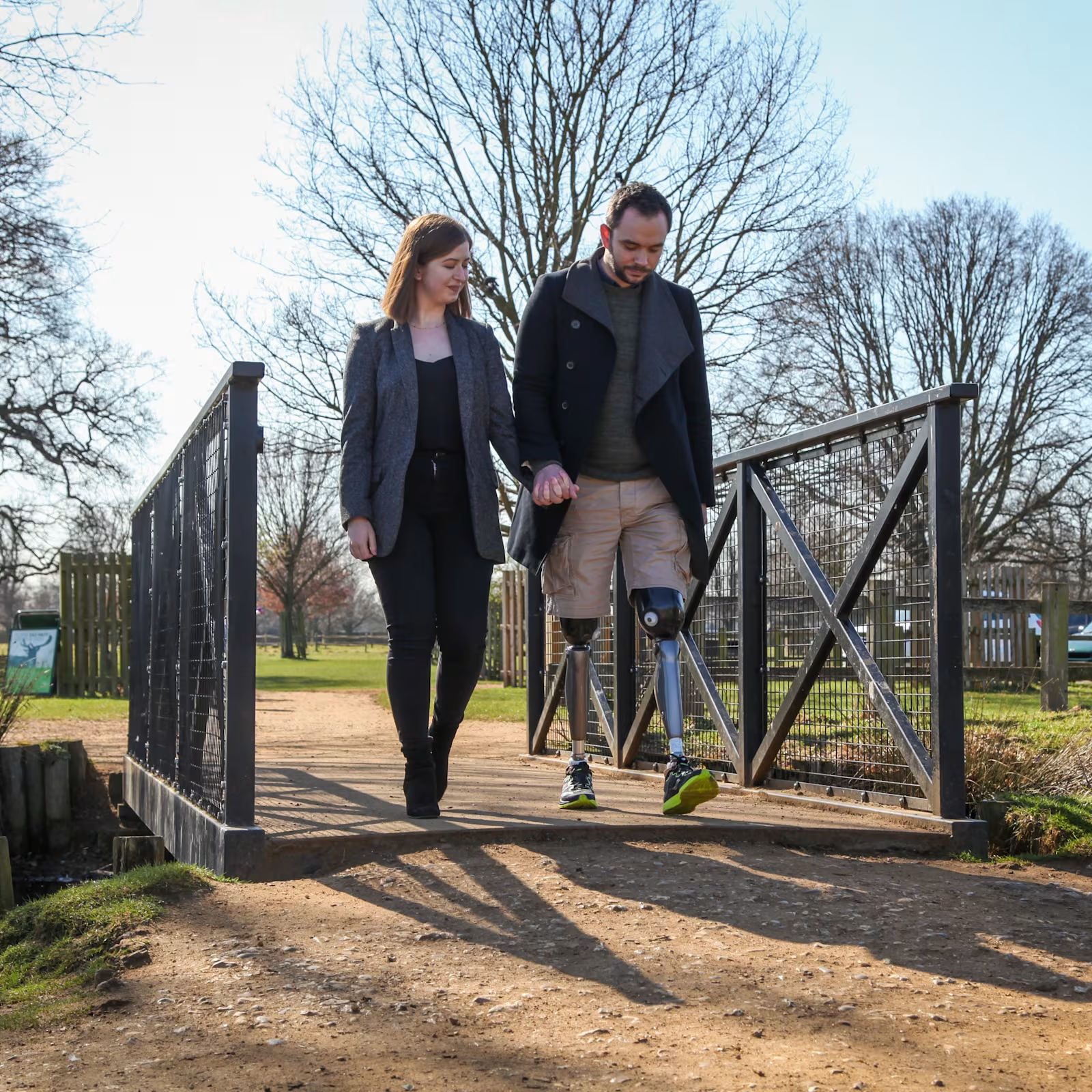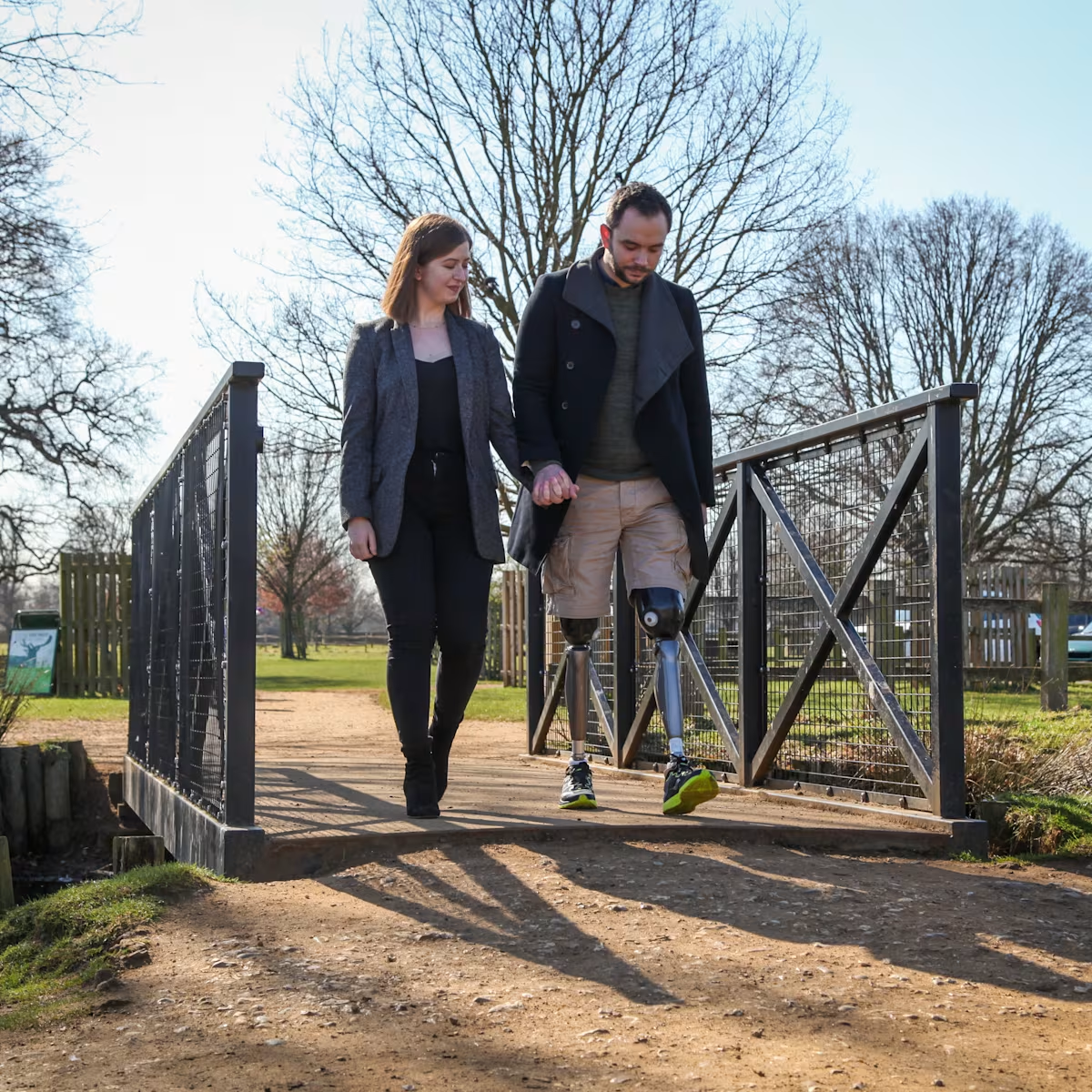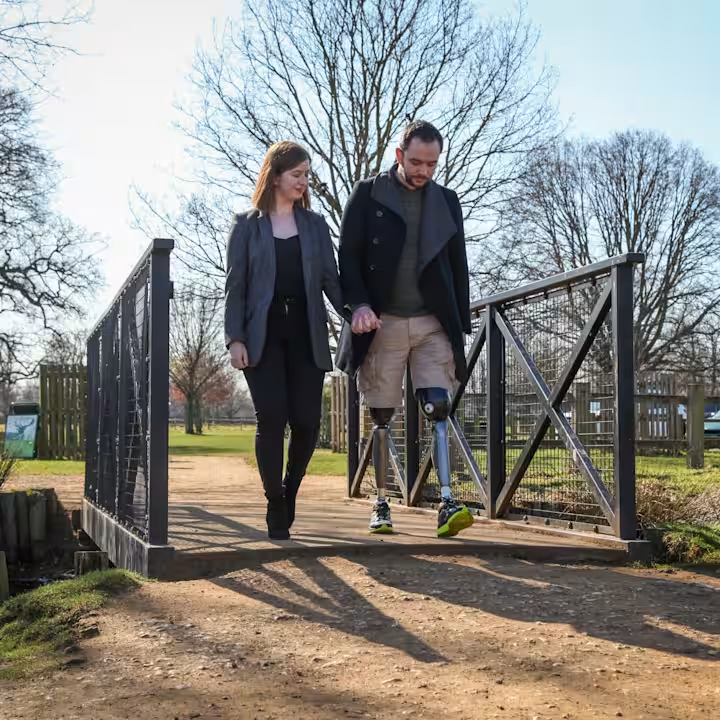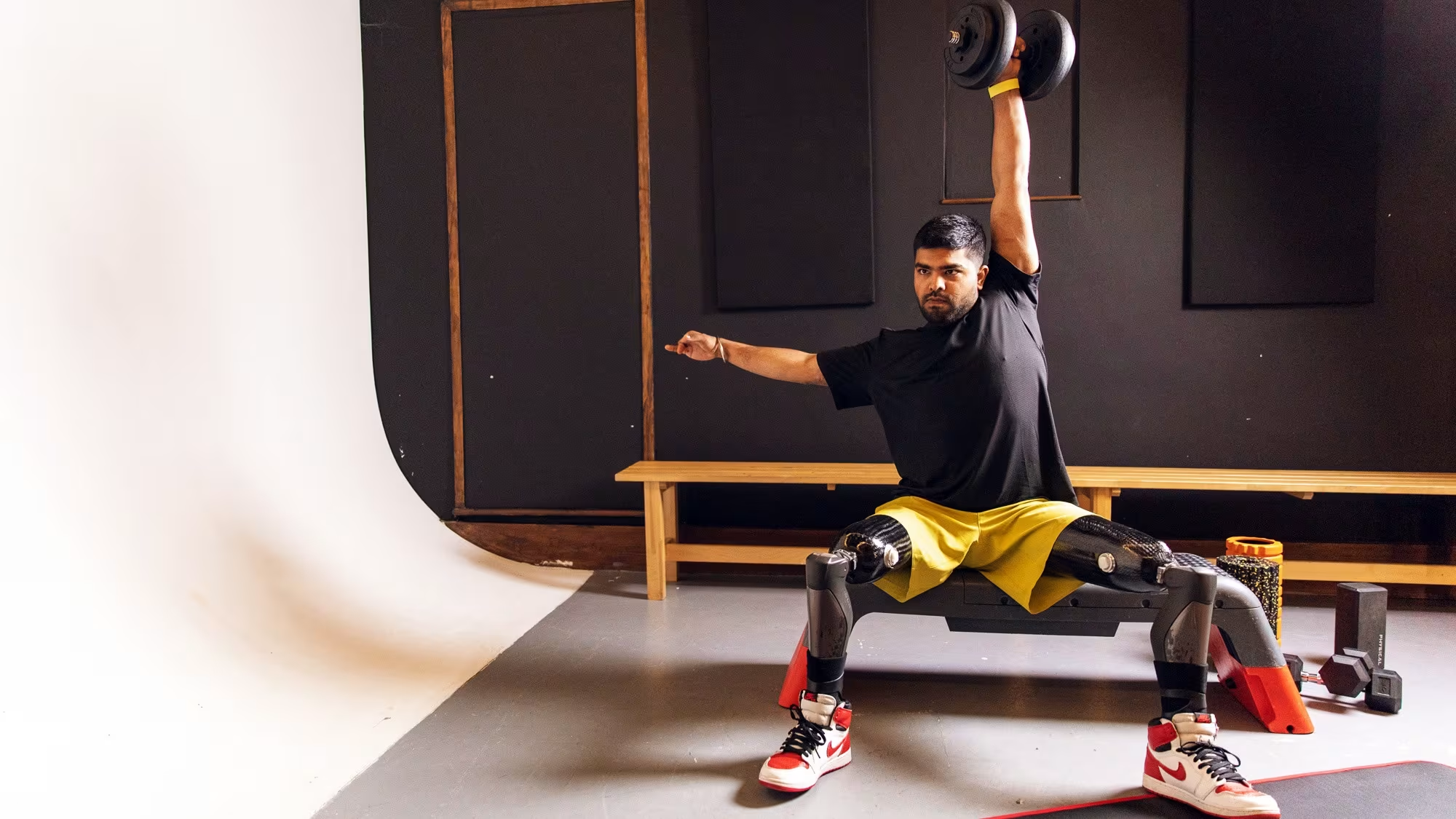


Alex's C-Leg Story
Biomedical engineering student Alex Dainty lost both his legs just days before Christmas 2012 when he was visiting his family in Galway, Ireland. He was hit by a drunk driver and suffered catastrophic injuries so severe, doctors had to put him in an induced coma for a week. He spent the next five years since the crash rebuilding his life, and thanks to recent NHS funding for advanced prosthetic legs, he is looking forward to a future without limits.
Alex, 26, was born in London before moving to Ireland with his family aged 11. He returned to the UK in 2011 to begin his studies in Mechanical Engineering at Kingston University and excelled in his first year exams. Just a couple of months after commencing his second year, Alex returned to Ireland for his Christmas break. Tragedy struck on 23 December 2012, after an evening spent with friends at a local pub. Alex was hit by a drunk driver during his walk home, pinning him to a wall. “The amputation more or less happened at the scene, I was hit so hard,” Alex said. He lost both of his legs through the knee. Initially in a coma, Alex spent eight weeks in hospital followed by six weeks of regular medical appointments. He received his first course of rehabilitation in Ireland 13 weeks after his accident with the aim of learning to walk again.
In the initial period after his injuries, Alex felt that he had limited success with using prostheses. He received basic mechanical knees and was encouraged to start walking. Alex said: “They were never suitable for someone like me. Attempting to get them to work was exhausting, I was using two sticks.” After spending more than half the year recuperating in Ireland, Alex decided to return to university in September 2013.
Shortly after returning to the UK, Alex was transferred to his local limb centre, the Douglas Bader Rehabilitation Centre at Roehampton. There, the team put Alex onto a type of prosthesis called “stubbies.” Stubbies are shortened prostheses that are custom fitted to provide an amputee with a lower centre of gravity and have a flat, wide foot for better balance and stability. “The stubbies really changed my ability to do things, I relied less on my stick and they allowed me to do a lot more. On the other hand, I felt like I still looked very obviously disabled; the stubbies were short, made me walk differently to everyone else and had no proper foot,” he said. Alex wears shorts often, but began to feel self-conscious when people would stare at his prosthetic legs. “I’m a very open person and as a young bilateral amputee we’re not known for being particularly shy. But you do get sick of people looking just at your prosthetic legs. They’re staring at one body part and not noticing the rest of you.”
With his background in Mechanical Engineering, Alex already had a strong understanding of the workings of advanced prosthetic limb and continued to seek out solutions to help maximise his mobility. “I tried knees that had a hydraulic system but they just weren’t good enough for what my injuries require. I often fell over and was afraid of getting hurt so I didn’t get up and out as much as I should have done” he says. During this time, Alex also had difficulties with his studies while simultaneously dealing with the impact of his injuries and had to take his second year three times in total. “I think I kept trying with different prosthetics that weren’t good enough, I had to put in so much work mentally and physically that I wasn’t left with the time I needed to concentrate on my university work. I was trying to do everything at once and I wasn’t really working.”
His prosthetist told Alex that the greatest chance of becoming mobile again would be if he used a Microprocessor Controlled Knee (MPK). Since Ottobock introduced the first computer-controlled knee, the C-Leg in 1997, the advantages of MPKs are well established. MPKs improve mobility and reduce the risk of injury from falls, which leads to better overall health and well-being for wearers. The technology continues to evolve, offering prosthetic wearers even smarter knees with improved sensors and longer battery life. When Alex’s limb centre explained at the time that MPKs were only available to patients in private clinics or military veterans, he gave up on the idea of having full-length prosthetics. “I felt I had to settle with the stubbies for the time being,” he said.
Four years after the loss of his legs, he received a much-needed psychological boost when he learned that MPKs would now be available to patients in NHS Limb Centres around England. “There was never going to be any question of which knee wold be right for me. I had researched into prosthetics for years before this, and I knew from the studies and research that I wanted the C-Leg 4. This was due to my level of injury being a bilateral amputee, as I knew that I would require the most reliable and stable knee available. My prosthetists, physiotherapists, everyone kept coming back to Ottobock.”
Alex was contacted by his limb centre in the summer of 2017 with the exciting news that he was eligible to receive an MPK and had made it to the top of the waiting list. Having recently completed his undergraduate degree, he was thrilled by the prospect of receiving the C-Leg 4 he had long wished for ahead of beginning his masters.
From the first fitting, Alex found that things moved quickly and he began to receive physiotherapy, walking for the first time on his new prostheses. “It was kind of mind blowing really. I expected them to be good but I had no idea they would be that good,” he said, looking back to one of his first sessions, when he tacked a slope outside of his rehabilitation centre. “On any of my previous prosthetic legs I either couldn’t do it or had to basically have a stick in one hand and hold onto my physio on the other side. Any time when I started to stumble or fall, panic would go through my head and I wouldn’t be able to control what was happening to me until I hit the ground.” Within two days, Alex’s determination combined with the technology enabled him to not only get rid of the walking stick, but also the physio’s support.
Now, six months on from his very first fitting of the C-Leg 4, Alex is optimistic about becoming more active and mobile. He said: “With my old prosthetic legs, I could feel where the limits were and it never felt like it would be worth it for me to try and push those limits. I was too afraid of getting hurt. With the C-Legs, the performance and the technology behind them, means I finally feel that they can keep up with me and whatever I want to do.”
He is enjoying trying new things as well, taking it one day at a time. “Before, I felt like I couldn’t do things, that all I could do was concentrate on the basics like getting around safely and doing my studies. I used to be unable to even get up the kerb if there was no rail, now I don’t even have to think about it. As an amputee, the Holy Grail is being able to get around without thinking. Before, it was exhausting always being alert and aware to avoid stumbles and falls. Now I can focus on the people I am with and the world around me.”
Alex is excited for the future and his career prospects, crediting the C-Leg with offering him a renewed sense of hope. He plans to finish his masters’ degree later this year, and is looking to continue his education to PHD level — with a new focus of attention.
“When I first started university I wanted to be an engineer in the car industry but following my experience I came to understand the sheer amount of development that is still to be done in the world of prosthetics. While the C-Leg is light years ahead of anything I have tried before, I want to be part of prosthetics development and improvement. I want to make a difference and use my experience to make the lives of others better.”
Discover the Kenevo and C-Leg 4
Trust, evolve and thrive with Ottobock.
Ottobock has been proudly providing the C-Leg 4 to medium - highly active individuals through the NHS since 2016. More recently less active individuals or those beginning their rehabilitation journey have been fitted with the Kenevo. Our signature Microprocessor Knee (MPK), C-Leg 4 offers lower limb amputees the technology and performance to live the life they want while the Kenevo aids amputees in improving their mobility and gaining independence. Keep reading to learn more about these solutions and the process of being fitted with an MPK through NHS funding.

